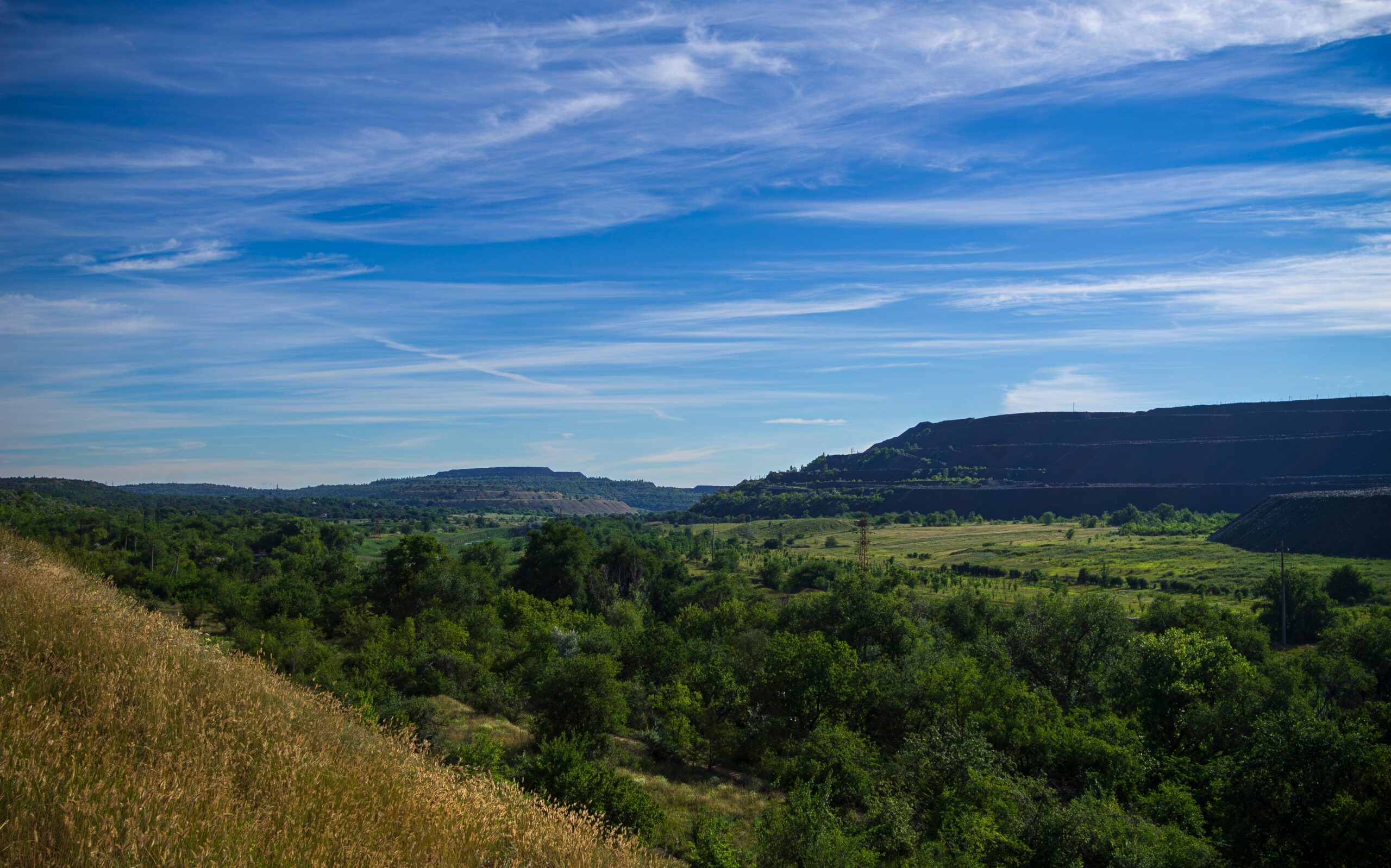- May 22, 2024

What is Source Control?
Source control is a fundamental concept when considering the design and construction of mine rock stockpiles (MRSs). Source control methods are design choices that mitigate the production of metal leaching and acid rock drainage (ML-ARD) from oxidized mine rock and inhibit their transportation into the surrounding environment (BC Ministry of Energy, Mines and Low Carbon Innovation, 2022). MRSs can generate ML-ARD when contaminants from oxidized rock materials (source) reach the environment (receptor) through infiltration or seepage (pathway) (Sawyer et al., 2024).
Within an MRS, various factors can contribute to ML-ARD generation, including net percolation caused by climate and wet events, geochemistry of mine rock, weathering rates of mine rock due to site temperature and water contact, and physical characteristics such as particle size, porosity, and surface area of sulfide materials (Kuyucak, 1999). However, the key driver for ML-ARD generation in an MRS is the exposure of potentially acid-generating (PAG) mine rock to oxygen.
Currently, the challenge is that conventional MRS construction methods allow for oxygen infiltration. While these methods simplify material handling and geotechnical stability, they result in particle size segregation and larger rock fragments forming a ‘rubble’ zone at the base of each lift, facilitating passive air entry and promoting oxidation of sulfide materials, and therefore ML-ARD generation (INAP, 2020).
Due to the coarse nature of mine rock and potential grain size segregation during deposition, an MRS typically has high permeabilities (Moncur, 2006; INAP, 2020). The permeability facilitates unconstrained flow of atmospheric air and water through the pile, promoting sulfide oxidation, subsequent acid formation, and downward movement of ML-ARD that reports as either seepage or entering groundwater (Kuyucak, 1999; Moncur, 2006). Therefore, it is important to consider whether the objective is to limit oxygen or water ingress, or both, when planning to incorporate source control into MRS design and construction (Sawyer et al., 2024).
Importance of Source Control in MRS Design and Construction
Source control measures are the highest level of hierarchical risk control with respect to source-pathway-receptor risk management (O’Kane et al., 2023), minimizing the risk of ML-ARD and improving long-term environmental outcomes by protecting regional surface water and groundwater during and after mine operations.
Reactive approaches that rely on capturing and treating potentially contaminated effluents are not sufficient alternatives to implementing effective source and mitigation control measures (Yukon Energy, Mines and Resources, 2013). Instead, reactive approaches should be considered only after exhausting all reasonable efforts in source control and mitigation (Yukon Energy, Mines and Resources, 2013).
Geochemical and Geotechnical Stability in MRS Design and Construction
Effective source control measures for addressing oxygen ingress can include placing oxygen-consuming materials around PAG materials to allow oxidation of non-acid materials and limit oxygen exposure to PAG materials (INAP, 2020). Installing sulfide passivation also helps limit oxidation, as thin layers of alkaline-generating materials are placed over PAG materials, allowing alkalinity to passivate sulfide materials with neutralization precipitation (INAP, 2020).
Site investigations and geochemical characterization studies help provide threshold conditions within the MRS that enable ML-ARD formation, such as the total neutralization potential and acid-generating potential (Kuyucak, 1999). These studies inform the mine rock handling plan and the design of MRS structures to reduce the influx of water and oxygen (Aduviri, 2018).
In operating mines, it is more practical to incorporate engineering controls that can be proactively designed in an MRS to limit oxygen access to reactive sulfide minerals and create internal pore gas conditions with low oxygen concentrations (INAP, 2020).
The geometry of the final MRS design significantly influences gas storage and vertical and lateral gas movement, crucial for mitigating sulfide oxidation and acidity generation (Sawyer et al., 2024). MRSs can be engineered to have fewer preferential seepage paths by minimizing the presence of coarser-textured zones within the MRS and along its base (Sawyer et al., 2024). Irregular surfaces, like benches, create preferential gas pathways, and exposed slopes are prone to increasing oxygen fluxes, creating favourable conditions for continuous airflow into the MRS (Sawyer et al., 2024).
Employing construction methods such as lower lift heights and compacted shells can also reduce grain size segregation during deposition and result in an engineered fill that is more consistent and predictable with respect to the resulting oxygen ingress, geotechnical stability, geochemical reactivity, and seepage through the structure (Sawyer et al., 2024).
Water Management
Incorporating source control into MRS design and construction provides an opportunity to optimize water management practices, especially with respect to seepage water. One key consideration in the design of an MRS is the ratio of recoverable to unrecoverable seepage. The ratio defines the percentage of seepage from an MRS that is collected for the purpose of managing potential adverse impacts to the receiving environment (recoverable), as compared to seepage that will eventually move unimpeded to environmental receptors (unrecoverable) (O’Kane et al., 2023).
Strategies for managing recoverable water include the use of seepage collection systems with lined polishing ponds for final cleaning, recycling contact water, and installing groundwater monitoring wells for quality assessment (Pacific Booker Minerals, 2009). When MRSs are constructed without a source control approach, traditional active water treatment is often required. When MRSs are constructed with a source control approach, the resulting lower concentration of contaminants in the recoverable water, or the lower volume of seepage water, could present an opportunity for the application of passive water treatment solutions (O’Kane et al., 2023).
Unrecoverable seepage from mine rock remains an environmental challenge as it cannot be efficiently collected, putting downstream receptors at risk. However, by incorporating source control approaches that limit oxygen re-supply and potential subsequent acidity, unrecoverable seepage will be of better quality (O’Kane et al., 2023). Source control simplifies water management by reducing the risk of adverse effects from unrecoverable seepage (O’Kane et al., 2023).
Okane’s Approach
At Okane, our approach to ML-ARD management focuses on managing risks by incorporating source control. Our interdisciplinary team, comprised of geotechnical engineers, mine planners, and geochemists, delivers integrated solutions that help our clients minimize the potential consequences and probability of MRS water quality impacts that lead to unnecessary treatment costs.
We conduct comprehensive site investigations and material characterization studies to build conceptual models that help inform our landform designs. We develop geochemical source terms from mine domains such as MRSs, tailings management facilities, and pit walls, ensuring that comprehensive water quality and water balance models account for and mitigate potential environmental impacts from these domains.
Using numerical models, we evaluate the long-term performance of suboxic designs that consider material variability and climate change, as well as leveraging tools like PHREEQC and MIN3P to analyze complex geochemical interactions within gas, water, and solid phases.
Additionally, Okane has contributed to the guidance document for the International Network for Acid Prevention (INAP) on Rock Placement Strategies to Enhance Operational and Closure Performance of Mine Rock Stockpiles, which covers best practices in construction methods for effectively managing ML-ARD risks to meet expected closure outcomes. We have also developed customized ML-ARD management toolkits as comprehensive resources for our clients that integrate best practices for proactive mitigation.
To learn more about how Okane Consultants can assist you in implementing effective ML-ARD management strategies tailored to your specific needs, contact us at info@okaneconsultants.com.
References
Aduviri, Osvaldo. (2018). Técnicas de prevención y control de la generación acida en minería [Techniques for prevention and control of acid generation in mining]. Revista de Medio Ambiente y Minería, (4), 24-31. http://www.scielo.org.bo/scielo.php?script=sci_arttext&pid=S2519-53522018000100003&lng=es&tlng=es.
British Columbia (BC) Ministry of Energy, Mines and Low Carbon Innovation. (2022). Technology readiness assessment: Interim technical guidance. Retrieved from the Industrial Waste Management of British Columbia website: https://www2.gov.bc.ca/assets/gov/environment/waste-management/industrial-waste/industrial-waste/mining-smelt-energy/guidance-documents/min-21_interim_guidance_on_technology_readiness_assessment.pdf
International Network for Acid Prevention (INAP). (2020). Rock placement strategies to enhance operational and closure performance of mine rock stockpiles, Phase 1 Work Program – Review, Assessment & Summary of Improved Construction Methods (INAP1977.03.04). Report prepared for the International Network for Acid Prevention by Earth Systems and Okane Consultants.
Kuyucak, N. (1999). Acid mine drainage prevention and control options. Proceedings of the International Mine Water Association (IMWA) Congress 1999, 599-606. https://www.imwa.info/docs/imwa_1999/IMWA1999_Kuyucak_599.pdf
Moncur, M. (2006, March 1). Acid mine drainage: past, present…future?. Wat on Earth. https://uwaterloo.ca/wat-on-earth/news/acid-mine-drainage-past-presentfuture
O’Kane, M., Pretorius, C., Harrington, J., & Clark, M. (2023). Clean water by design—The impact of landform design on long-term water stewardship. In B. Abbasi, J. Parshley, A. Fourie & M. Tibbett (Eds.), Mine Closure 2023: Proceedings of the 16th International Conference on Mine Closure. Australian Centre for Geomechanics. https://doi.org/10.36487/ACG_repo/2315_038
Pacific Booker Minerals. (2009). Morrison Copper/Gold Project: Chapter 4 – Project Description Part 4. Retrieved from the BC Environmental Assessment Office of British Columbia website: https://projects.eao.gov.bc.ca/api/document/5886a0d3a4acd4014b81f792/fetch/Chapter%204%20Project%20Description%20Part%204.pdf
Sawyer, R., O’Kane, M., & Tremblay, G. (2024). Building mine rock stockpiles for full lifecycle value and risk reduction. [Draft submitted for publication].
Yukon Energy, Mines and Resources. (2013). Reclamation and closure planning for quartz mining projects: Plan requirements and closure costing guidance. Retrieved from the Documents of Yukon website: https://yukon.ca/sites/yukon.ca/files/emr/emr-forms/emr-reclamation-closure-planning-quartz-mining-projects-plan-requirements-closure-costing-guidance.pdf
